The emerging telemedicine offers a unique solution for healthcare providers and patients to interact remotely, enhancing healthcare delivery access, efficiency, and convenience. But we only got to taste its immense benefits not so long ago. Did you know that during COVID-19, 82% of Americans tried telemedicine for the first time? And only after three years, in 2022, almost 40% of patients already received care via telemedicine.
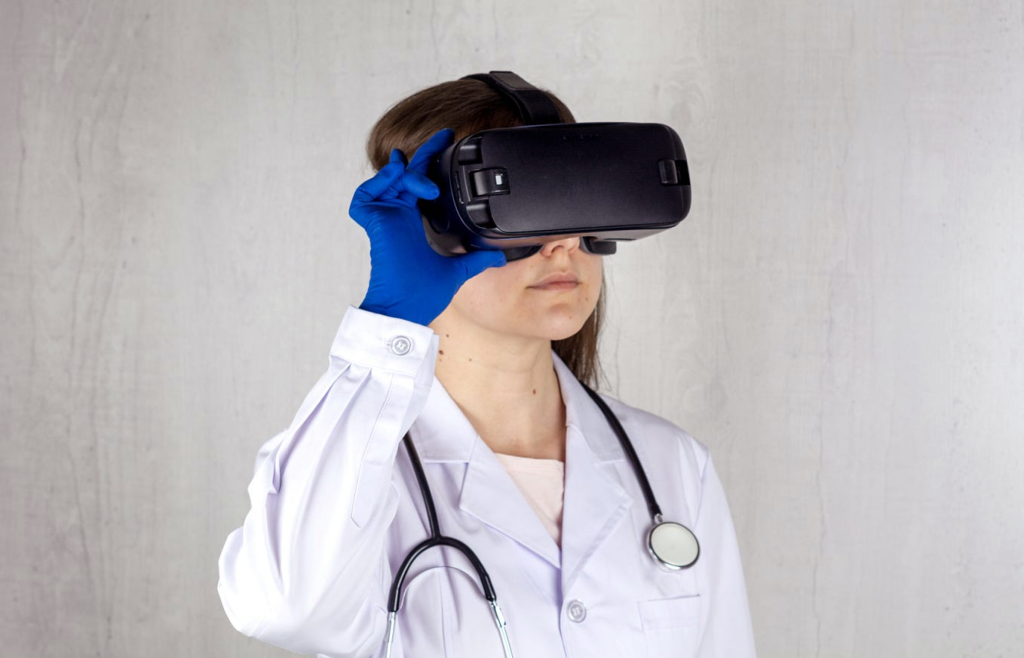
After the global pandemic, telemedicine has quickly transitioned from an innovation to a basic healthcare service. This recent shift towards virtual care has spurred the need for robust, reliable, and feature-rich telemedicine software.
So let us explore the world of telemedicine software development, its significance, working process, cost implications, requirements, and more.
Table of Contents
“Our team has always strived to be pioneers in the realm of health tech, and our approach to telemedicine software development is no exception. SPSoft’s commitment to bringing your custom telemedicine software solutions to life will reshape the industry’s landscape and make a significant, tangible impact in the lives of your patients.”
Romaniya Mykyta
Head of Product Management, SPSoft
“Our dedication to revolutionizing healthcare with innovative telemedicine software development is undeniable — you’ll notice it from the get-go. Working with SPSoft will propel your project into the next level of care provision and allow you to touch patients’ lives in new and meaningful ways.”
Mike Lazor
CEO, SPSoft
Overview of Today’s Telemedicine Market
Telemedicine is a growing sector within the healthcare industry, driven by technological advancements and increasing demand for convenient, accessible healthcare solutions.
The COVID-19 pandemic significantly accelerated the growth of the telemedicine industry, as people turned to virtual consultations to minimize the risk of virus transmission. Many healthcare providers rapidly adopted telemedicine technologies to continue providing services during lockdowns and social distancing.
As a result, the telemedicine market size stands at $70B as of 2023, compared to $46.4B pre-Covid, in 2019. And powered by technologies like 5G, artificial intelligence, and machine learning, it is expected to reach more than $200B by 2030.

The Different Types of Telemedicine Solutions
Off-the-shelf and custom telemedicine software solutions are designed to address a broad spectrum of health concerns and come in three main varieties — real-time telemedicine, store-and-forward telemedicine, and remote patient monitoring (RPM).
Real-Time Telemedicine
Real-time telemedicine is interactive and leverages secure video conferencing, messaging apps, or other online communication channels. It acts as a virtual substitute for traditional, face-to-face doctor consultations.
Here are some subcategories of interactive telemedicine conducted in real-time:
- video conferencing
- telepsychiatry
- telenursing
- telepharmacy
- telerehabilitation
- teleneuropsychology
Primary care physicians and psychiatrists use these telemedicine software development services most often as they facilitate immediate care delivery, particularly in emergencies, and for follow-up visits or monitoring medication regimes.
Store-and-Forward Telemedicine
Also known as asynchronous telemedicine, this type relies on the electronic transmission of health data between patients and physicians. It can include sharing laboratory reports, images (MRI scans and X-rays), and audio and video studies.
This principle underpins implementing internal electronic health record (EHR) systems within healthcare organizations, significantly enhancing operational efficiency.
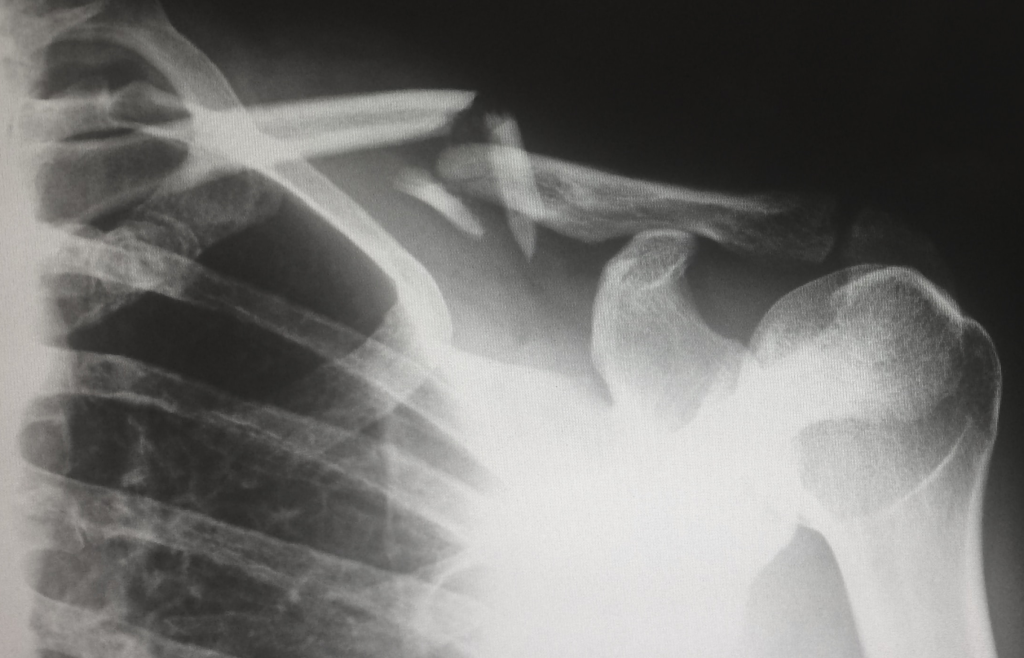
Remote Patient Monitoring
Telemonitoring encompasses the use of wearable devices like heart monitors, skin patches, or smartwatches that gather critical health data. This data is then transmitted to applications on devices and eventually sent to a cloud-based server, where healthcare professionals can analyze it.
Remote patient monitoring is generally adopted for patients managing chronic diseases such as diabetes, asthma, or cardiovascular disease. It also enables healthcare specialists to continue monitoring their patients’ health even after discharge, facilitating a return to their regular life while ensuring patient safety.
Interested in elevating your healthcare services with our cutting-edge telemedicine software development services? Our team of experts is ready to guide you!
Trends in Telemedicine Technologies
Telemedicine software development is increasingly becoming an integral part of the healthcare industry and is being rapidly transformed by technological advancements like the following.
Artificial Intelligence (AI) and Machine Learning (ML)
AI and ML are used to analyze patient data, predict health trends, and even help doctors diagnose conditions. They are also used in managing appointments and maintaining electronic health records. Moreover, predictive analytics, driven by AI, can warn early about potential health crises or outbreaks.
Internet of Medical Things (IoMT)
The IoMT is a connected network that generates, collects, analyzes, and transmits health data. The network can include wearable technology such as smartwatches, fitness trackers, and home health monitors that send data directly to healthcare providers, who can then make informed decisions about their patients’ well-being.
5G Technology
The introduction of 5G allows for higher data transfer speeds and lower latency, enabling real-time remote patient monitoring and high-quality video consultations. 5G may also enable remote surgery, with doctors operating on patients from miles away with the help of robotic systems and real-time data transmission.
Blockchain Technology
Blockchain’s ability to provide secure, transparent, and tamper-proof records is increasingly recognized as a vital telemedicine feature. It can help maintain patient privacy, ensure data integrity, and manage patient consent. Furthermore, blockchain enhances supply chain transparency, ensuring patients treated remotely receive authentic medication.
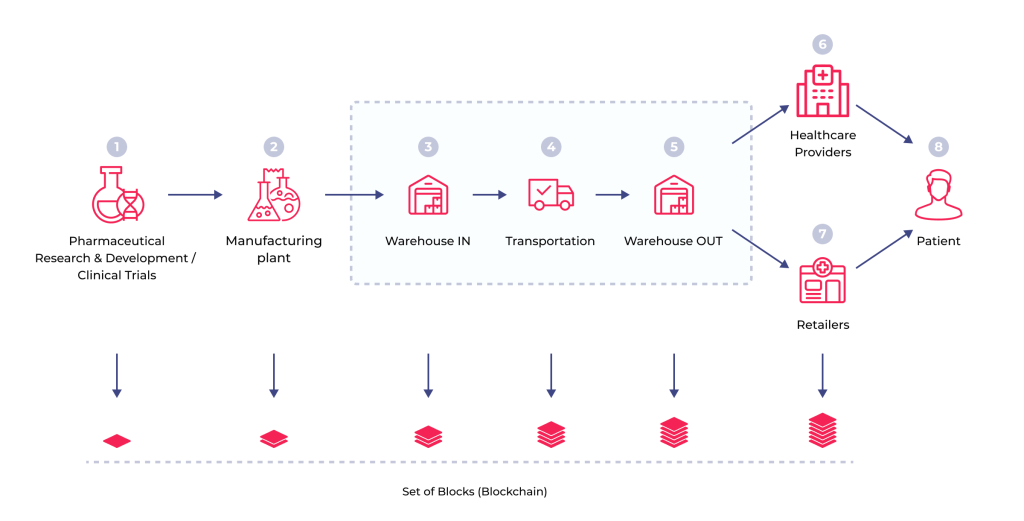
Augmented Reality (AR) and Virtual Reality (VR)
AR and VR technologies can be used for medical training, patient education, and therapeutic purposes. These techs can enhance patient outcomes, helping providers better explain diagnoses and treatment plans. Moreover, AR and VR are being explored for therapeutic purposes, such as pain management and psychological therapy.
Cloud Computing
Cloud technology in telemedicine allows for the efficient storage and sharing of large amounts of patient data. It can also facilitate integration and interoperability between different healthcare systems, streamlining workflows and promoting collaboration among healthcare professionals.
Telemedicine Software Development — Who Needs It?
Telemedicine software development is helpful for various healthcare professionals, institutions, and patients. Here are some of its potential users and applications:
- Healthcare providers can extend their services beyond their physical offices, providing care to patients who may not be able to travel for in-person visits.
- Hospitals and clinics can provide comprehensive care to their patients by monitoring patients’ health remotely, conducting follow-ups, providing urgent care services, and reducing wait times.
- Pharmacies can use telemedicine software and devices to consult with patients, recommend over-the-counter medications, and provide medication management services.
- Health insurance companies can incorporate telemedicine software into their services to streamline the claim process, provide health advice, and offer preventative care services to their policyholders.
- Patients, especially those living in remote areas, having mobility issues or having busy schedules, can use it to consult with healthcare providers, manage their health records, and monitor their health.
Naturally, telemedicine software development requires understanding the needs of these diverse users, including their workflow, communication channels, and data security requirements. Thus, working with a software development team with healthcare technology experience is crucial to ensure the product is functional, secure, and user-friendly.
How Telemedicine Solutions Work
When a healthcare institution provides telemedicine options, an individual requires a stable internet connection and a smartphone or computer to connect on one of the two ends described below.
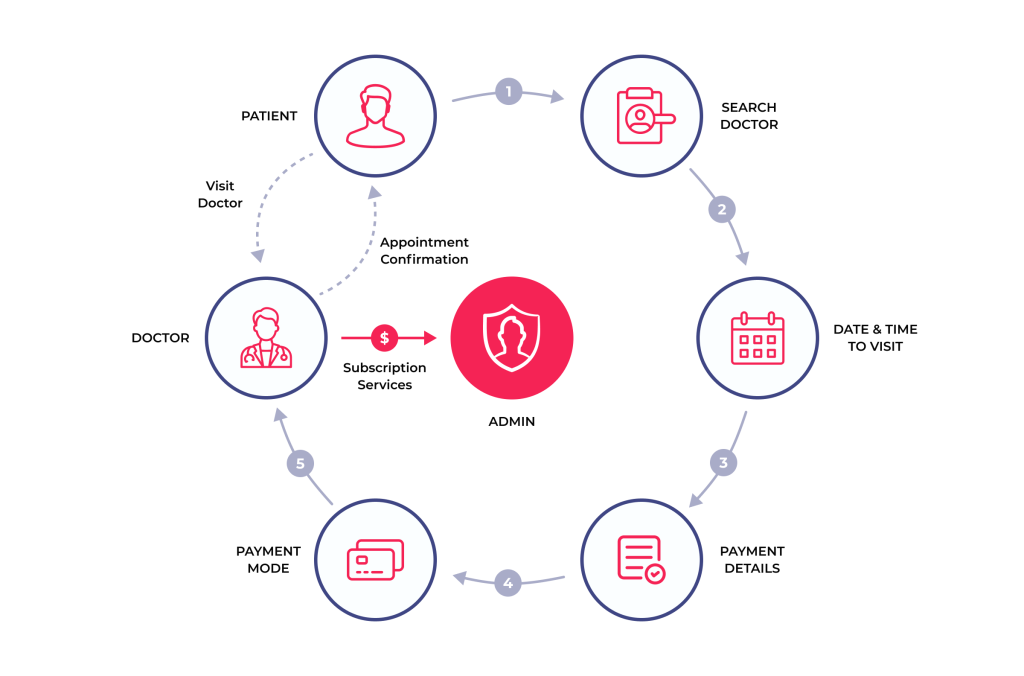
The patient interface allows patients to view their medical history, interact with medical professionals via messages, request refills of prescriptions, and schedule appointments online. Even if the patient has to visit the doctor physically, the prior arrangements can be done from the comfort of their home.
The doctor’s interface allows medical professionals to access patient records, manage patient interactions, set up appointment schedules, and provide consultations. This interface offers a comprehensive view of the patient’s medical history, test results, medication details, and past consultation notes, facilitating a holistic understanding of the patient’s health status.
Doctors can also track treatment progress, make necessary adjustments to the treatment plan as needed, and send prescriptions digitally to the pharmacy of the patient’s choice. That helps minimize the need for physical prescription handovers — all within a single platform.
Intrigued by the innovative world of telemedicine software development? Uncover the step-by-step process of creating your custom telemedicine platform!
Building a Telemedicine Platform — Main Features
Telemedicine software platforms usually have many features to facilitate remote healthcare services. Here are some of the key software capabilities:
- video conferencing
- scheduling and appointment management
- EHR integration
- prescription management
- secure messaging
- payment processing
- mobile access (optional)
But the exact features can vary between telemedicine software and devices depending on the end users’ needs.
The Undeniable Benefits of the Telemedicine Technology
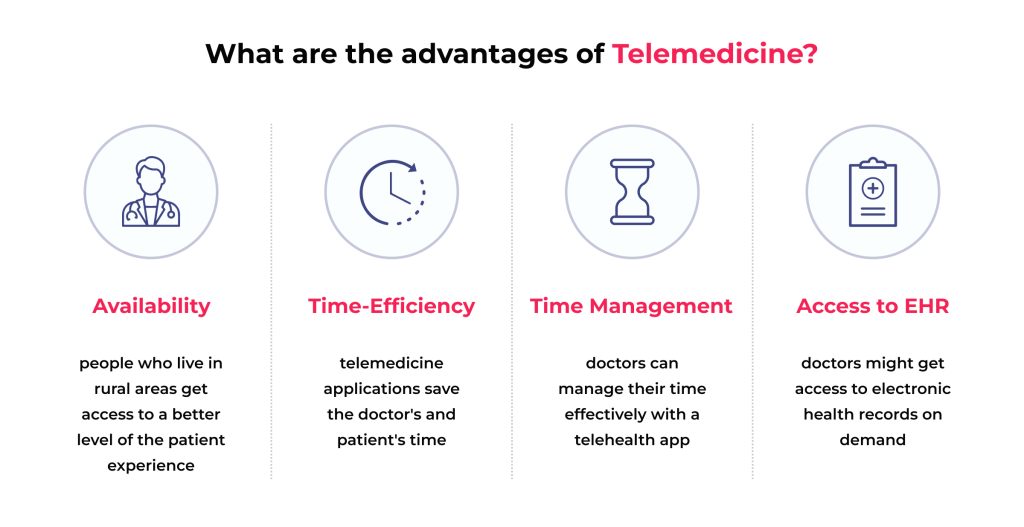
Telemedicine software development offers several benefits to both patients and healthcare providers. Here is their brief overview:
- Availability — more accessible healthcare services for people living in rural areas or struggling to reach the doctor’s office physically;
- Time efficiency — both patients and doctors save time on the commute without sacrificing the quality of care;
- Improved time management — online appointment scheduling allows for more flexibility for patients and better workday planning for physicians;
- Fast access to patient data — doctors can use EHRs to get a full overview of a patient’s health data.
Overall, telemedicine offers excellent advantages and brings healthcare services closer to patients and doctors, regardless of location or availability.
Telemedicine is a groundbreaking advancement, but like all technologies, it has its benefits and drawbacks. Check out our extensive blog post on its pros and cons!
Examples of the Most Successful Telemedicine Solutions
While various off-the-shelf and custom telemedicine software solutions are available, some tend to stand the test of time. Here are three telemedicine platforms recognized as leading examples in their niche.
1. Teladoc
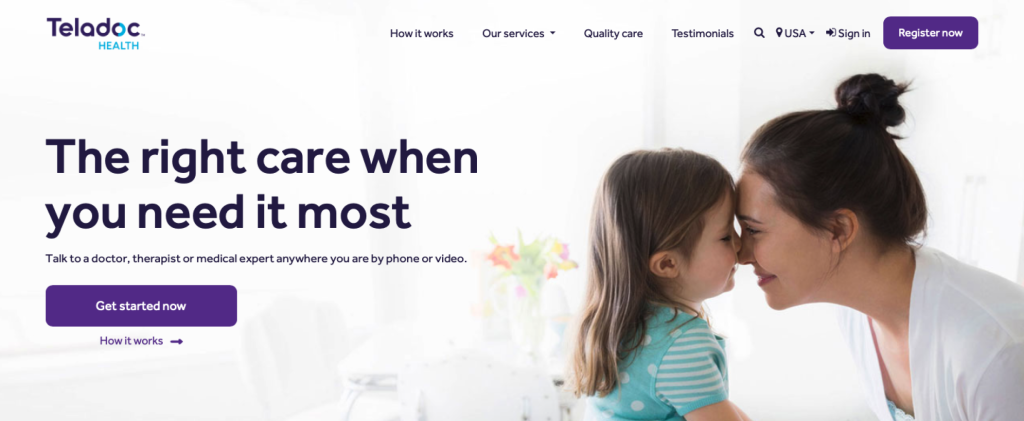
Teladoc Health, Inc., typically referred to as Teladoc, is a multinational telemedicine and virtual healthcare company. It allows patients 24/7 access to healthcare services via mobile devices, the Internet, video, or phone. The company’s broad services encompass general medical consultations, dermatology, mental health, and specialized expert medical assistance.
2. Amwell
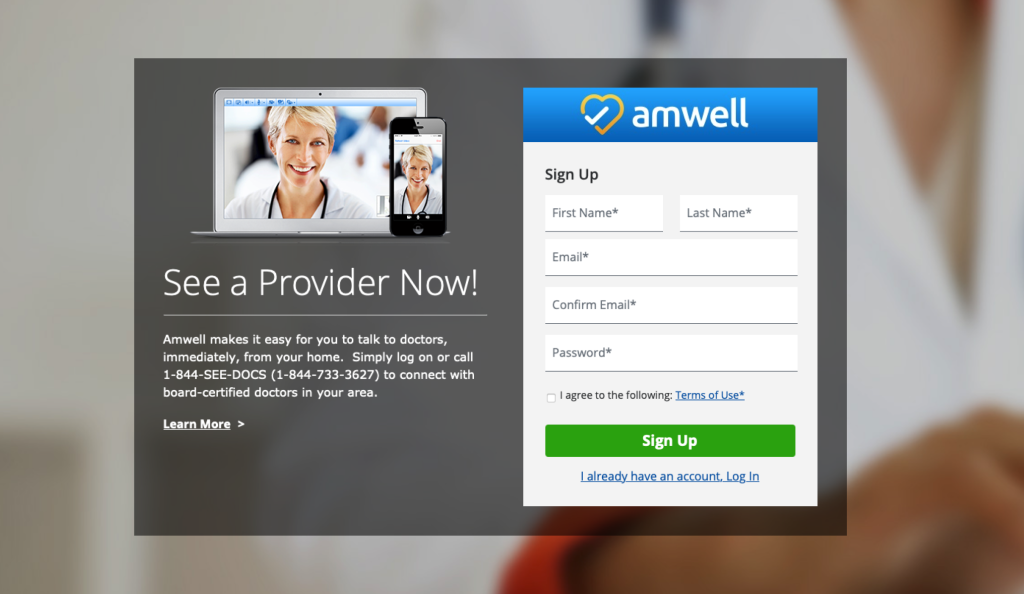
Amwell (American Well) is another key player in the telehealth industry. They connect users with doctors, therapists, and medical specialists through video conferencing — the services provided by Amwell range from urgent care to chronic disease management to preventative health care.
In addition to serving individual patients, Amwell also provides services for health systems, insurers, and employers. They offer a suite of technology and software to enable other healthcare organizations to build their telehealth operations.
3. Doctor on Demand
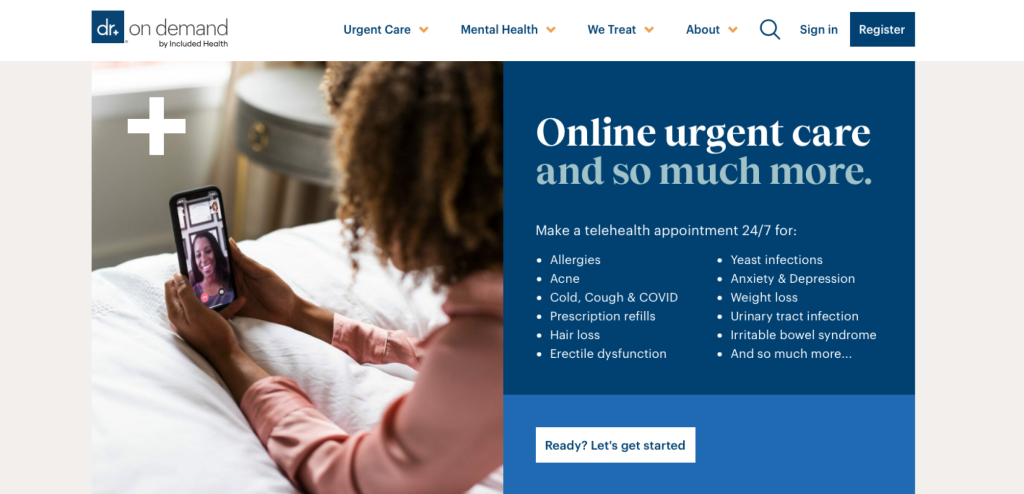
Doctor on Demand, arguably one of the most renowned telehealth apps, is known for its rapid service, connecting patients with doctors in just three minutes for a video consultation with a doctor. After the consultation, the physician provides a diagnosis and recommends appropriate treatment securely stored in an EHR system or cloud storage.
Telemedicine Software Requirements
Implementing telemedicine software brings numerous advantages to healthcare services but also comes with its own requirements. Here are some of them.
Technical Requirements
Telemedicine software and devices require a reliable, high-speed internet connection for video consultations and data transmission, which may only be available in some areas or for some patients. Additionally, patients and providers need to have devices that are capable of running the software.
User Experience
While telemedicine can improve access to healthcare services, it may also exacerbate disparities if some populations, such as elderly, rural, low-income, or less tech-savvy individuals, cannot use these services. Therefore, a well-thought user experience design is crucial to ensure the software is intuitive, user-friendly, and accessible.
Data Security and Privacy
Telemedicine platforms deal with sensitive personal and medical data, making them potential cyberattack targets. Therefore, robust security measures must be in place to protect this data. Compliance with healthcare privacy regulations, such as the HIPAA in the U.S. and GDPR in the EU, is necessary.
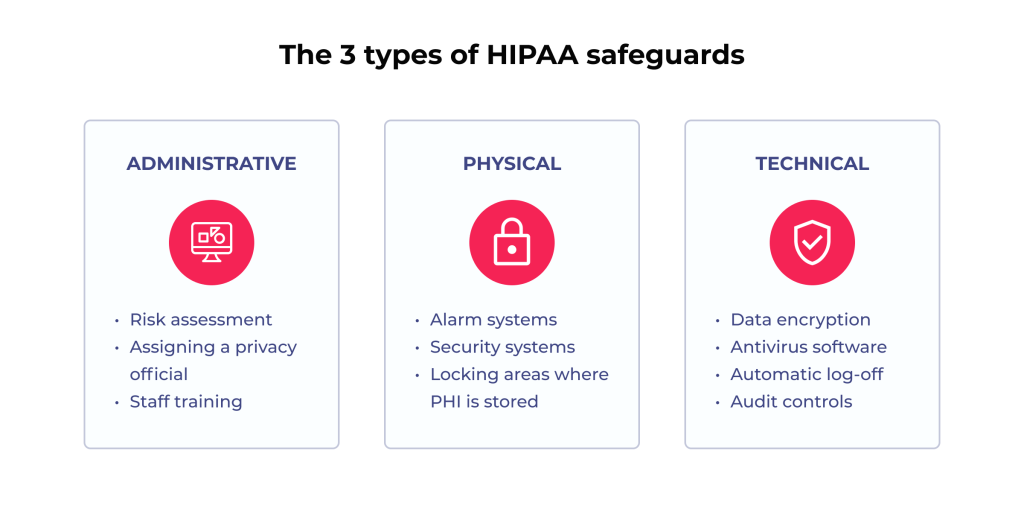
Of course, addressing these requirements involves careful planning and ongoing technical support. But the outcome is a secure, well-functioning telehealth platform.
The Process Behind Telemedicine Software Development
Telemedicine software development is a complex process that requires technical expertise and a deep understanding of healthcare operations and regulations. Here is what the process usually looks like, step by step:
- Requirement gathering and analysis. The first step involves understanding the specific needs of the end-users (patients and healthcare providers), like their workflows, the types of services they require, their data management needs, and the technical and regulatory environment in which they operate.
- Design. Once the requirements are clear, the next step is designing the user interface, the data structures, the functional modules (like video consultations, appointment scheduling, prescription management, etc.), and the security measures.
- Development & integration. This step involves translating the design into a functional application. This stage also involves integrating the software with other healthcare systems like EHRs, billing systems, pharmacies, and medical devices.
- Testing & deployment. Testing involves running the software under a variety of conditions and use cases. Once the software has been tested and refined, it can be installed on the users’ devices or go live for online access.
- Training and maintenance. Training implies educating users on how to use the software effectively. Ongoing maintenance is essential to ensure the software is updated regularly and continues to operate smoothly and securely.
Check out our in-depth analysis breaking down the telemedicine software costs to help you make an informed decision!
Final Word
High-quality, custom telemedicine software and devices are revolutionizing healthcare delivery, making it more accessible, convenient, and patient-centric than ever before. Thus, investing in telemedicine software development today can yield outstanding outcomes in improved patient care and enhanced healthcare outcomes in the long run.
Whether starting from scratch or optimizing an existing system, we hope this guide provides the insights you need to embark on your relevant journey.
Have any questions or need more information about our telemedicine software development services? Get in touch — let’s shape the future of healthcare together!
FAQ
What hardware and software are used for telemedicine?
Telemedicine usually involves using hardware like: personal devices (computers, tablets, and smartphones) for video consultations; medical devices like blood pressure or glucose monitors; servers (or cloud systems)
As for telemedicine software development, the most common solutions are the following: telemedicine platforms for video conferencing and appointment scheduling; electronic health records (EHRs) for storing patient health information; security software for protecting sensitive health information; and communication tools like chat for convenient patient-provider interaction.
What is telemedicine software?
Telemedicine software is a digital platform that facilitates remote clinical healthcare services, enabling doctors and patients to interact without being physically present in the same location. This software leverages technology to facilitate virtual consultations, diagnosis, and treatment through secure video calls, voice calls, instant messaging, or email.



